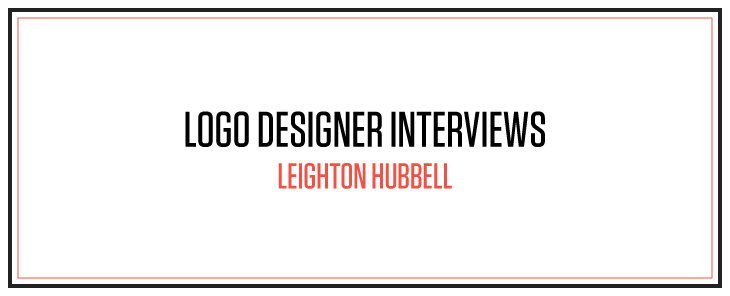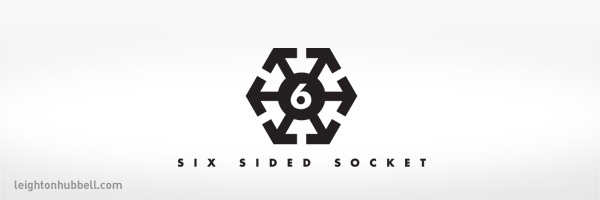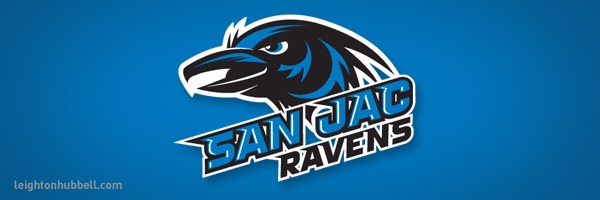Logo Designer Interviews: Leighton Hubbell
I am hugely excited about this post in our Logo Designer Interviews series. This week I had the pleasure of interviewing Southern California-based designer, Leighton Hubbell. Leighton is an exceptionally talented designer whose award-winning design career started more than 20 years ago. His logo, identity, and graphic design work have appeared in no less than two dozen publications. His past client list includes Sheraton Hotels, Nestle USA, Samsung and many more prestigious names.
A few days ago when I first received the interview responses from Leighton, I was completely blown away by the depth the answers provided. This interview provides a valuable insight into the mind of a true design professional.
To stay updated with Leighton Hubbell’s work please visit Leightonhubbell.com and read his blog. Additionally, you can also find Leighton on both Twitter and Facebook.
Now, onto the interview!
An interview with Leighton Hubbell
Hi Leighton, thank you very much for taking the time for this interview. I am sure many of our readers are already familiar with your work, however for those who are not, can you tell us a little about your background?
Sure, my name is Leighton Hubbell. I’m the guy behind the one-person design shop, Leightonhubbell.com and also Hubbell Design Works. I started out eons ago and have worked in several capacities in the communication arts industry including employment and freelancing at various design firms, ad agencies and promotional branding agencies.
I am most widely recognized for my logo design work, even though I offer a complete range of other design services.
For the last nine years, I’ve had my own small studio focusing primarily on logo design, icon design, identity, branding and illustration. Although I’ve worked with many large brands, a significant portion of my business is working with small to mid-sized companies on their marketing and design efforts.
What is a typical day at the office like for Leighton Hubbell?
Well, these days that seems to be a moving target, but here goes.
I go through the job log and see what’s a priority for the day. Some days it’s blog articles and some days it’s self-promotion. Others are project research, field trips, logo design, illustration or what have you. Most of the time it’s a little bit of everything all mixed together.
It’s never really that typical and I guess that’s what I like most about my job.
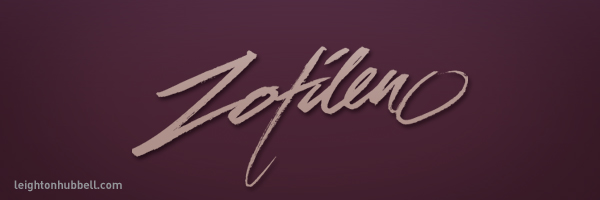
Can you walk us through you typical design process when designing a new logo for a client?
My first phase is going through the information that the client shared in our meeting and see how it may work visually. If I need to do any additional research, this is the stage I will fit that in.
I start working out thumbnail sketches in my sketchbook or any scrap paper I can find. There are usually a dozen or so concepts I can glean out of the thumbnails. From there I will weed out the weaker ideas and concentrate on a select few.
If it’s a logo illustration I may work out some tighter sketches before I proceed to the computer – especially if there is a pose or position that is particularly difficult to solve. Good visual reference is key here in making the pose believable and read well.
With logo illustrations, I usually run the tight sketches by the client before proceeding any further. It’s much easier to adjust them in sketch form than making very time consuming illustrations and then having them scrap the whole concept. I like to work smarter, and not always harder.
Then, it’s working out typefaces and color palettes that seem appropriate for the strongest directions.
After presenting the first round of concepts, the selected direction will go through refinements and adjustments in consecutive rounds until there is an approved logo design.
If there are any special applications, I may present possible designs to help with the client’s final decision. There’s a general process, but every project is different.

How do you go about finding new clients? What promotional techniques have worked best for you?
A good deal of my clients are referrals from friends, colleagues and other business contacts. Those are always welcome and good for business, too. A portion of that has changed with the times, so I adjusted my marketing strategy a few years ago to explore new markets and audiences.
Now, I have a source book page, I send out promotional e-mails a few times a year and try to participate in the social media community as much as possible. I am far more visible now than in years past.
I also have work and profiles posted on a number of logo design and illustration portfolio sites, oh and the blogs do help. It’s a wonder that I do any design work anymore!
How long do you typically spend working on a logo? What factors contribute to how long it takes?
It really depends on the client and their situation. If they are able to share adequate information and can communicate their needs well, it can take as little as two weeks from start to finish. Sometimes I don’t get that much time. If they aren’t very expedient about feedback and follow-through, it can significantly slow down the process. If I am able to keep the process flowing well, the concepts flow even better.
Often times, there are a number of individuals that need to review or sign off on the logo design and this can impact the time frame. If I am made aware of the committee, I will try and build in additional time into the schedule and price accordingly. If there is only one or two key contacts in the process, it usually takes much less time.
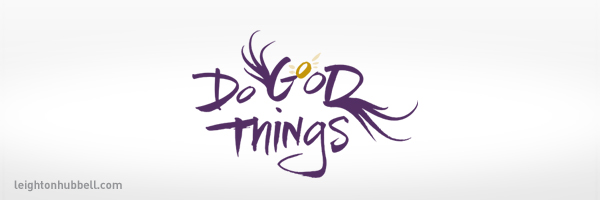
What is the most challenging identity design project you have done? How did you overcome these challenges?
That’s a very interesting question.
A few years ago, I was hired by a former client who had made a move to a new company as marketing director. The company she went to work for needed a logo and identity design for a start-up gourmet food division. I had rather limited experience in this category at the time, but she felt I was up for the task.
Well, one afternoon she had made arrangements for the company owner to meet me in person and talk about the new company and what they were looking for in the new identity. I was a little nervous about meeting this gentleman as I had heard that he was a bit difficult to work with. After the meeting, I had apparently impressed him and he was eager to work together.
After we had gone through a very thorough and extensive logo design process and had a completed identity package, we started on packaging design.
We went through an exhaustive study of color combinations for the first set of label designs. After what seemed like endless rounds of color options, I had finally had enough. There it was, the moment of truth. Do I keep letting them run me ragged, or do I say something and risk losing the account? If I don’t they will continue to do whatever they want and never make a firm decision–in essence, it would suck to work with them.
So, before I knew it, I made the move. I basically told them that I had nothing left to give and that we were essentially ‘driving off of a cliff’ with their constant indecision. I had put my foot down. Quite honestly, I was a little scared about what would happen, because it was the biggest project I had ever done at that point in my career. It was literally make or break.
Well, as it turned out, it was the best move I had ever made in a client/designer relationship. They took a step back and asked me which color combinations I thought would work best. It turns out that after 12 rounds of colors (no kidding), they went with round 2’s work. And from that point on, it was a significantly better work situation.
That moment really set the tone for how I work with clients to this day. I want them to know that I am not merely a decorator that moves design elements and pixels, but a marketer, a strategist and a professional graphic designer as well.
Although the marketing director no longer works with that company, she and I still work together to this day, 12 years later.
In your opinion, what makes someone a good logo designer?
I believe it takes a special skill to design logos well, and not every graphic designer has it. You need to be able to tell a unique story about the person or business in a rather small space, with a limited design palette. The logo design needs to be such an interesting story that people are drawn to it upon first view and remember it every time they see it again.
Some designers are visually too wordy, or aren’t especially good draftsmen or can’t contain their conceptual thinking to such a brief communication. It’s just not in them and that’s OK. There are many other disciplines in graphic design to master.
Like many things in the design world, there are people who can just put it together and then there are those that are true craftsmen and create something special.
An interesting interview with Milton Glaser was recently posted on Design Informer, during which Milton said the “doing a logo is one of the most boring activities in the design profession.” As someone who spends a lot of time designing logos, what is your take on this statement?
I’d have to say that there are many designers who would have loved to work on some of the amazing projects that Milton Glaser has contributed to his clients and the design world. Of course, they were likely not that amazing to start with, but with Mr. Glaser’s unique talent and work ethic, they became something very special.
It is interesting that one of the most iconic logo designers of our time, was actually somewhat bored with the activity. I guess in some way there are people that are immensely talented at a particular skill, but for whatever reason find it tedious and have lost interest in it. Perhaps with as many logos that he had designed in his 60+ year career, there wasn’t as much of a design challenge with logo designs for him anymore.
I’d have to say from my own experience, I never started out with the goal of becoming a logo designer. It was just one of those things that I eventually became very good at. Perhaps it was the same situation for Milton Glaser and he would have rather had other design challenges to work on.
What is your advice for aspiring logo designers wishing to be successful in the industry? Last words?
Study the masters. Draw a lot. Get a sketchbook. Study typography. Study design. Be a student of the craft. Work hard and pay your dues. Always, always, always work on your portfolio.
It’s not a job, it’s a lifestyle. Make it so. And most of all, give your work a reason to live.
####
A huge thank you to Leighton for participating in our Logo Design Interviews series. It was an honour.
Logo Designer Interviews is an ongoing series here on the Logobird blog. We have more exciting interviews coming up that you wont want to miss, including:
Graham Smith – imjustcreative, Sneh Roy – Little Box of Ideas, Steve Zelle – Processed Identity, Steve Douglas – The Logo Factory, Sean Farrell – Brand Clay, and more!
To stay up to date please subscribe to our RSS feed and follow us on Twitter.
